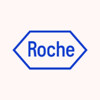A Study of Induction Dosing With Peginterferon Alfa-2a and Ribavirin in Participants With Chronic Hepatitis C (CHC) Genotype 1 Infection
Hepatitis C, Chronic

About this trial
This is an interventional treatment trial for Hepatitis C, Chronic
Eligibility Criteria
Inclusion Criteria: Diagnosis of chronic CHC, genotype 1 Chronic liver disease consistent with CHC on a biopsy sample obtained within the previous 36 months as judged by a local pathologist (all countries except Australia) Infection with Hepatitis C virus (Australian sites only had to meet Section 100 criteria for treatment with PEG-IFN alfa-2a plus ribavirin) Compensated liver disease Naive to interferon-based therapy for CHC infection Exclusion Criteria: Systemic antiviral, antineoplastic, or immunomodulatory treatment within 6 months of study drug Coinfection with active hepatitis A or B virus, or with human immunodeficiency virus (HIV) Chronic liver disease other than CHC infection
Sites / Locations
Arms of the Study
Arm 1
Arm 2
Experimental
Experimental
PEG-IFN alfa-2a+Ribavirin - Induction Treatment
PEG-IFN alfa-2a+Ribavirin - Standard Treatment
Participants will receive 12 weeks of induction therapy with PEG-IFN alfa-2a (Pegasys), 360 micrograms (mcg) subcutaneous (SC) once weekly, along with ribavirin, 1000 or 1200 milligrams (mg) orally daily in divided doses. Thereafter, the dose of PEG-IFN alfa-2a will be reduced to 180 mcg SC once weekly and the ribavirin dose maintained for the remaining 36 weeks of treatment.
Participants will receive 48 weeks of standard therapy with PEG-IFN alfa-2a, 180 mcg SC once weekly, along with ribavirin, 1000 or 1200 mg orally daily in divided doses.
Outcomes
Primary Outcome Measures
Secondary Outcome Measures
Full Information
1. Study Identification
2. Study Status
3. Sponsor/Collaborators
4. Oversight
5. Study Description
6. Conditions and Keywords
7. Study Design
8. Arms, Groups, and Interventions
10. Eligibility
12. IPD Sharing Statement
Learn more about this trial
